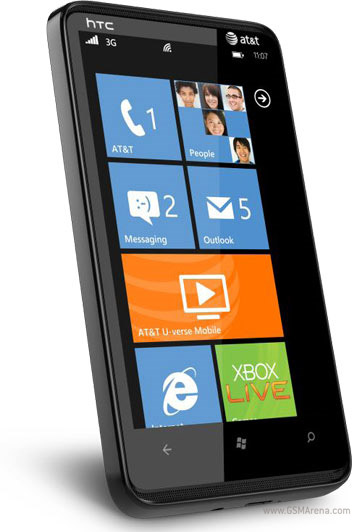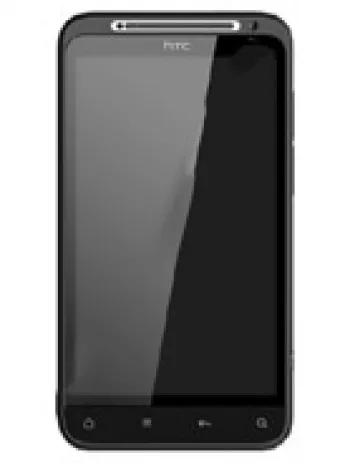
Design and Display
The HTC HD7S features a sleek and professional design, typical of HTC devices from the early 2010s. It boasts dimensions of 122 x 68 x 11.2 mm and a weight of 162 grams, offering a solid feel in the hand. The phone was equipped with a 4.3-inch S-LCD display, which was quite large for its time, providing users with a generous screen size for browsing and media consumption. The display resolution of 480 x 800 pixels with a 5:3 aspect ratio resulted in decent clarity and color production, achieving a pixel density of approximately 217 ppi.
Platform and Performance
Running on Microsoft Windows Phone 7, the HTC HD7S was part of an ambitious endeavor by Microsoft to enter the smartphone operating system market with a user-friendly interface. The phone was powered by a Qualcomm QSD8250 Snapdragon S1 chipset with a 1.0 GHz Scorpion CPU and an Adreno 200 GPU. While these specs were not top-of-the-line even at the time, they were sufficient for handling the basic tasks typical for smartphone users in 2011, including web browsing, social media, and basic gaming. The device came with 576MB of RAM and 16GB of internal storage, which was non-expandable due to the lack of a microSD card slot.
Camera Capabilities
The HTC HD7S was equipped with a single 5 MP autofocus rear camera. It featured dual-LED flash technology, which helped improve photo quality in low-light conditions. The camera supported 720p video recording, which allowed users to capture videos with relatively good clarity for that time period. However, it is worth noting that there was no front-facing camera, which limited the device in terms of video calls and selfies, which were becoming increasingly popular at the time.
Battery Life
The phone's power was sourced from a removable 1230 mAh Li-Ion battery, providing adequate longevity for daily use. Under normal conditions, the battery could offer up to 276 hours of standby time and up to 4 hours and 30 minutes of talk time, which was comparable to other smartphones released in that era. However, heavy usage involving extensive internet browsing or gaming would necessitate more frequent charges.
Connectivity and Additional Features
The HTC HD7S offered several connectivity options, which was important for users wanting a comprehensive smartphone experience. The device supported GSM and HSPA technologies, and users could connect to the internet with HSPA speeds of up to 7.2/2 Mbps. Wi-Fi 802.11 b/g/n support allowed for fast and reliable internet connectivity, while Bluetooth 2.1 with A2DP enabled file transfers and wireless audio streaming.
The phone included various sensors such as an accelerometer, proximity sensor, and compass, enhancing the user experience by offering features like auto-rotate and location tracking with GPS and A-GPS technology. It also featured stereo FM radio with RDS for entertainment, and a microUSB 2.0 port for charging and data transfer.
Audio and Sound
The HTC HD7S included a loudspeaker for audio playback and also featured a 3.5mm audio jack, which provided flexibility for users to connect their headphones or external speakers. The audio quality for calls and media playback was satisfactory and comparable to the devices of its time.
Market Launch and Availability
Initially announced in March 2011 and released in June of the same year, the HTC HD7S aimed to target users looking for a reliable smartphone with a large display and the new features offered by Windows Phone 7. The device placed an emphasis on being different from the Android and iOS choices prevalent at the time. However, with stiff competition and the rapid pace of smartphone innovation, the HTC HD7S had a relatively short market lifespan and is now discontinued.
Overall Evaluation
The HTC HD7S, with its combination of decent design and incorporation of Microsoft’s Windows Phone 7 OS, remains an intriguing part of smartphone history. Although it faced stiff competition from Android and iOS devices that offered better hardware and richer app ecosystems, it provided a unique alternative with its own strengths, particularly in its display size and seamless integration of Microsoft services. However, its limitations in terms of camera technology, battery life, and hardware capabilities in comparison to its contemporaries meant that it had a niche market appeal.
When it was released, it was priced around 120 EUR. It found a market among users who appreciated an easy-to-use interface and tight integration with Microsoft services such as Bing Maps.
The HTC HD7S stands as a testament to the evolving nature of smartphone technology and the aggressive market dynamics of the early 2010s. It's particularly memorable for gadget enthusiasts interested in the progression of mobile operating systems and the effort to diversify beyond the dominant platforms of the time.
Key Features of HTC HD7S
- Network: Supports GSM / HSPA with 3G band capabilities.
- Display: Large 4.3-inch S-LCD screen with a resolution of 480 x 800 pixels.
- Processor: Powered by a 1.0 GHz Scorpion CPU and Qualcomm Snapdragon S1 chipset.
- Operating System: Runs on Microsoft Windows Phone 7.
- Memory: Offers 16GB of internal storage with 576MB RAM.
- Main Camera: 5 MP camera with autofocus and dual-LED flash; capable of recording 720p videos.
- Connectivity: Includes Wi-Fi, Bluetooth 2.1, GPS with A-GPS, and stereo FM radio with RDS.
- Audio: Equipped with a loudspeaker and 3.5mm headphone jack.
- Sensors: Includes accelerometer, proximity sensor, and compass.
- Battery: Removable Li-Ion 1230 mAh battery with up to 276 hours of standby time.
- Build: Compact dimensions of 122 x 68 x 11.2 mm and weighs 162 g.
HTC HD7S Key Disadvantages
- Lacks 4G connectivity; limited to 3G.
- Discontinued model, meaning limited support and updates.
- Heavy and bulky with a weight of 162g.
- Uses a Mini-SIM rather than more modern Micro or Nano-SIM.
- Low screen resolution for its size with only 480 x 800 pixels resulting in ~217 ppi.
- No memory card slot for expandable storage.
- Relatively low internal RAM of 576MB, which may affect multitasking and performance.
- Outdated operating system, Microsoft Windows Phone 7, which may not support newer applications and services.
- Single main camera with 5 MP which may not meet modern photo quality expectations.
- Lack of a front-facing (selfie) camera.
- Limited battery life with only 1230 mAh and a talk time of up to 4 hours 30 minutes.

View Also
More Phones
All Rights Reserved +14266 Phones © Mobilawy 2025

























